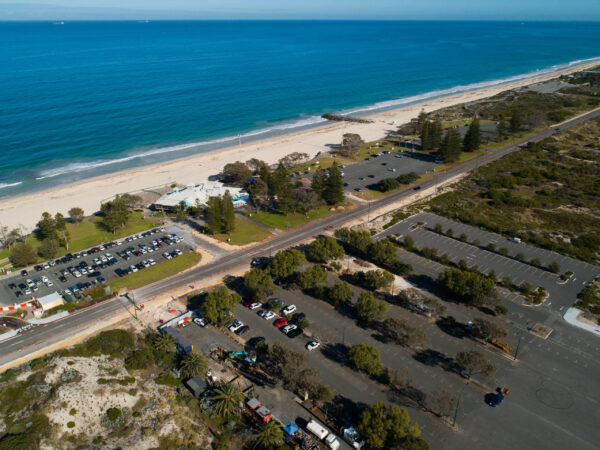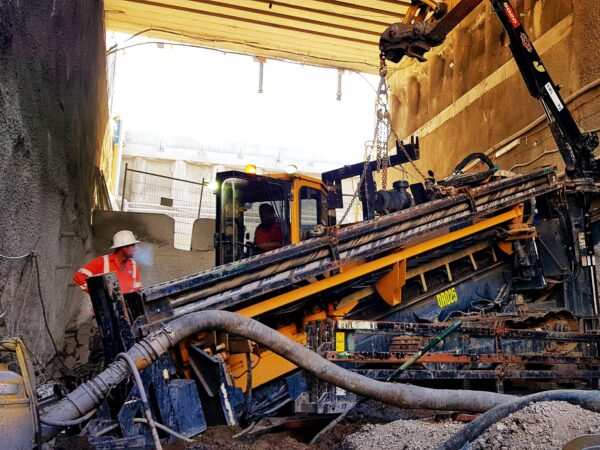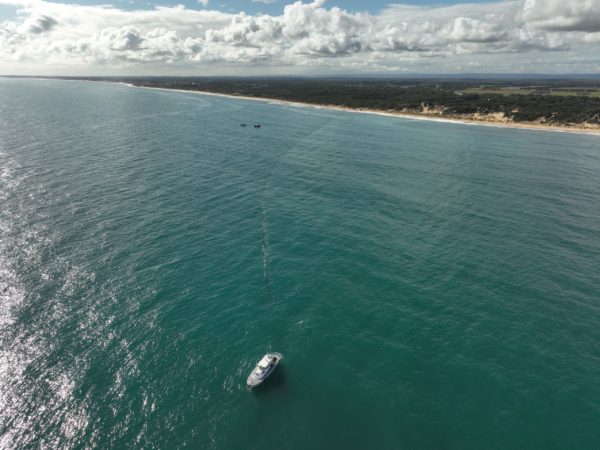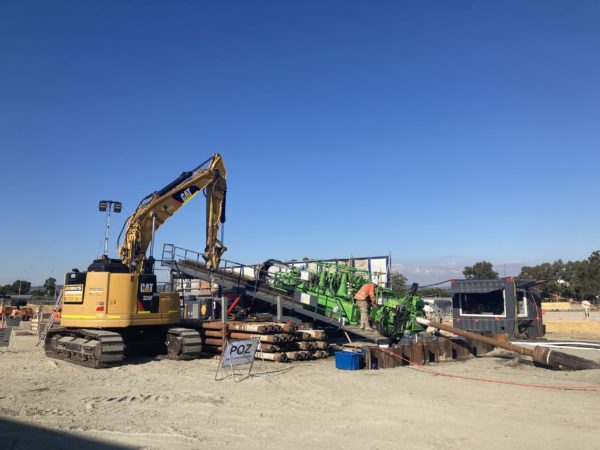Keys to a Successful Project
Proper prior planning will prevent poor performance in all trenchless projects.
Geotechnical Information
If you want the project to be successful, then geotechnical reports are crucial. Good old-fashioned bore holes and rocks in a box are paramount to a successful installation. In order to accurately design and cost a horizontal directional drilling (HDD) crossing, it is highly recommended that a geotechnical investigation is carried out close to the prescribed bore route, preferably to a depth exceeding that of the initial bore design. It is always important to undertake the boreholes along the full length of the bore, not just at either end. From the bore sample and geotechnical report, the following information can be determined:
Bore Design
-
Depth of cover with respect to the natural surface level. in conjunction with ground conditions, this is a serious issue so as to reduce the likelihood of frac-out. The rule of thumb is that 10 x diameter of the reamed hole should be the depth of cover in OTR ground conditions.
-
Depth of existing services located along the bore path and required clearance.
-
The intended use of the bore – either gravity or pressure mains.
-
Entry and exit inclination angle.
-
The bend radius of the product pipe, reamers, mud motor and drill rods.
Drilling Fluids
The drilling fluids that are typically mixed and designed by a mud engineer serve various functions for the trenchless installation of a main. The unique function of drilling fluid in the HDD process is:
- To discharge and remove the soil/geological cuttings in the bore.
- To reduce the friction of the drill rods in the borehole.
- To stabilise the borehole and to reduce the likelihood of the hole caving in.
- To lubricate and smoothly embed the main whilst being pulled in.
- To protect the drill rods, drill head and reamers from abrasion and to cool the temperature during rotation.
- To loosen the soil that is around the cut area of the drill head or reamer.
- To create a filter cake wall and to protect the groundwater from running.
Tooling
The type of tooling to be used for a project is crucial and is based on the geotechnical data. The styles of reamers can be condensed into the following:
- Stepped reamers – step by step pyramid-shaped, only suited for light soils.
- Conical/fluted reamers – the most common form of Horizontal Directional Drilling (HDD) reamer
- Blade-type reamers – light reamers for loosely packed soils; arch-shaped blades carry various cutting elements.
- Fly cutters – reamers with braces or spokes carrying an outside cutting crest for light, loose soils, also those sensitive to settling.
- Reamers with elements of a blade – for very light, non-bearing soils.
- Barrel reamers – barrel-shaped reamers, with conical closings, edged with chisels on the front conical surface; often armoured with protective welds; for producing wide upsizing diameters.
- Removable blade reamers – basic construction with canted, self-blocking removable plates with cutting edges; optimised to loosen and excavate most common types of soil.
- Hole openers – equipped with a bearing shaft that is protected by tungsten carbide elements (TCIs) and arranged on the round chisel in an axially symmetrical line-up, partially staggered.
Costs
Rock reamers, in particular, are very expensive and some reamers are a one-use-only piece of tooling. Freight costs can be significant and exchange rates impact on pricing for tooling made overseas. Repair costs to reamers upon completion of the works can also be significant.
Not all reamers are made locally, and even when they are available they can take time to manufacture.
Guidance Systems
Walkover Guidance Systems
-
drill head location
-
calculated depth
-
inclination of the head
-
tool face angle
-
temperature downhole, and
-
forward and backward readings (front and rear locations) to determine the direction of the bore
Steering Tool Techniques
There are a number of alternatives to walkover guidance. In particular two types are used today – wireline & gyro techniques.
This system uses very precise detection systems in the bore head that measure the inclination, the directional angles (angles between the geographic north and the borehole axis = azimuth) and the roll of the bore head. Since the azimuth is often measured via magnetometers, the detection system must be placed in a housing or rod made of anti-magnetic steel. The inclination and roll can be measured gravitationally, inductively or by accelerometers. Artificial magnetic fields for HDD bores above the surface or at the bottom of rivers are often laid out using cable loop.
The tool is mounted behind the jetting assembly/mud motor. The downhole unit measures the position of the steering tool in real time (“measurement-whilst-drilling”). This information is combined with the drilled length to calculate the displacement through our proprietary algorithms. With this, the drill head can thereby be accurately steered over the envisaged bore path. A Gyro steering tool provides a proven accuracy of 0.01º in the pitch plane and 0.04º in the azimuth plane, irrespective of the circumstances. The Gyro steering tool is not dependent on magnetic fields or beacons and hence has a (much) shorter setup time.
Both types of guidance system require:
- a steering engineer to ‘track’ the bore location
- a wire inside the rod to provide power
- extensive survey data to ensure the bore is accurate







